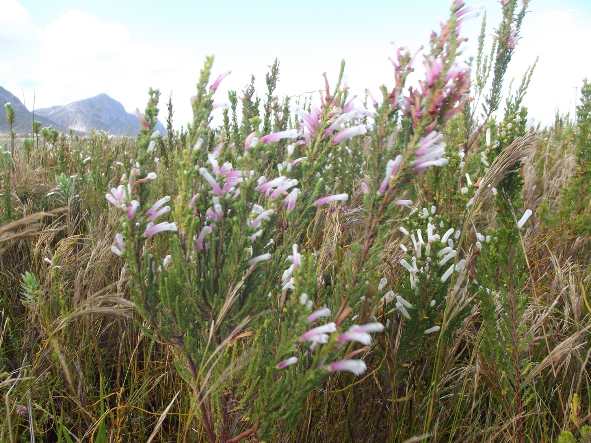New life in the Fynbos
Category Property
Fynbos regeneration after the fire
By Tim Attwell

Fynbos is rich in beauty and diversity, but it must be renewed by fire to keep it that way. While the fires that ravaged Betty’s Bay, Pringle Bay and parts of Hermanus in January 2019 were indeed devastating, new life began emerging in the fynbos within just a few weeks after the flames had died. After heavy winter rains, we are seeing an abundance of new growth, with fynbos regeneration well underway.

Fynbos goes through stages of growth between fires, ranging from 4-year intervals (grassy fynbos) to 45-year intervals (arid fynbos), depending on the type of fynbos. In our area, 10- to 15-year intervals are optimal. This hillside in Kogelberg Sandstone Fynbos is about one year old.

This is Kogelberg Sandstone Fynbos immediately after the January fire. Time to begin again.
Springtime - or a year - following the fire

A year or so later, after the winter rains and spring has come, the ‘everlastings’ or ‘sewejaartjies’ appear. This picture shows Phaenocoma prolifera, the ‘Rooisewejaartjie’.

Tetraria thermalis, ‘Bergpalmiet’, which survives fire, has sprouted, providing shelter for new growth of Roella and Edmondia species.

Pillansia templemanii, a geophyte of the family Iridaceae, takes advantage of the extra nutrients in the soil, provided by the ashes of a fire eighteen months before, and comes into bloom.

Meanwhile, new Proteaceae are growing slowly in the young veld.

Restios are re-establishing themselves, along with Adenandra species in the Buchu (Rutaceae) family and Aspalathus species in the Fabaceae family.

Erica pillansii appears before an overstorey of Proteaceae dominates the veld.
Two years after the fire

Watsonia species thrive in the two years following a fire.
Three years after the fire

Three years on is a good time for Erica species. This picture shows Erica perspicua, Prince of Wales Heath.
Author: Tim Attwell





